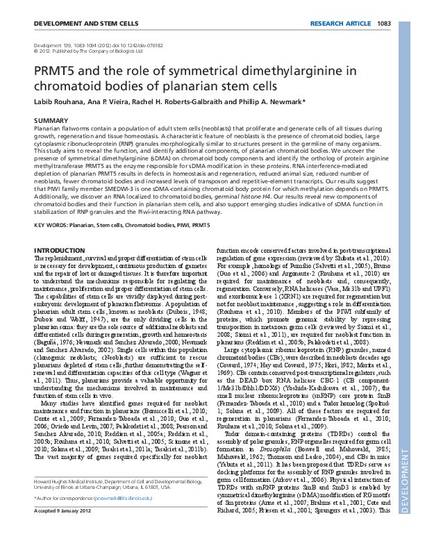
Planarian flatworms contain a population of adult stem cells (neoblasts) that proliferate and generate cells of all tissues during growth, regeneration and tissue homeostasis. A characteristic feature of neoblasts is the presence of chromatoid bodies, large cytoplasmic ribonucleoprotein (RNP) granules morphologically similar to structures present in the germline of many organisms. This study aims to reveal the function, and identify additional components, of planarian chromatoid bodies. We uncover the presence of symmetrical dimethylarginine (sDMA) on chromatoid body components and identify the ortholog of protein arginine methyltransferase PRMT5 as the enzyme responsible for sDMA modification in these proteins. RNA interference-mediated depletion of planarian PRMT5 results in defects in homeostasis and regeneration, reduced animal size, reduced number of neoblasts, fewer chromatoid bodies and increased levels of transposon and repetitive-element transcripts. Our results suggest that PIWI family member SMEDWI-3 is one sDMA-containing chromatoid body protein for which methylation depends on PRMT5. Additionally, we discover an RNA localized to chromatoid bodies, germinal histone H4. Our results reveal new components of chromatoid bodies and their function in planarian stem cells, and also support emerging studies indicative of sDMA function in stabilization of RNP granules and the Piwi-interacting RNA pathway.
Available at: http://works.bepress.com/labib_rouhana/17/

Final published version also available via dx.doi.org/10.1242/dev.076182.